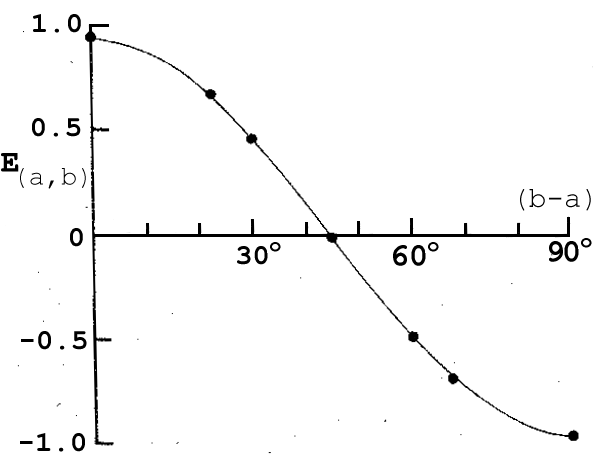

|
|
| |||||||||
|
In this experiment, the important quantity to measure is not merely
the average result for one set of detector settings, but a very
specific combination.1
As we discussed previously in the section which describes the
experimental setup, the important quantity
is S = | E(a,b) -
E(a,d) | +
| E(c,b)
E(c,d) |.
Now, according to the analysis of Hidden Variable
Theories, S must be less than or equal to 2.
Before we present the results of the experiment, there are a few more technical aspects which we must discuss. The setup is not perfect. For example, the detectors only can see a finite solid angle and the polarization filters are not perfect. We can adjust the expectation values predicted by Quantum Mechanics by the following factor: F [ (TvA - ThA) (TvB - ThB) ] / [ (TvA + ThA) (TvB + ThB) ]
where F stands for the finite solid angle of the detectors, Tv
A is the transmission coefficient for vertically polarized light passing
through the A filter, ThA is the transmission coefficent
for horizontally polarized light passing through the A filter, and so on.
For this experiment, the equipment used had the following values: All that is left is to report the data. From the experiment, S was measured to be 2.697 ± 0.015. This value is clearly in violation of the hidden variable prediction and corresponds almost exactly to the quantum mechanical description! In addition to this result, a plot of the experimental expectation values verses the angle between the two detector orientations is given below. 2 The line in the graph is not a best fit to the curve, it is a plot of 0.955 cos(2t), the Quantum Mechanically predicted expectation value. Quantum Mechanics has predicted not only the correct value for S but also the correct dependance of the expectation value on the detector angles. |
